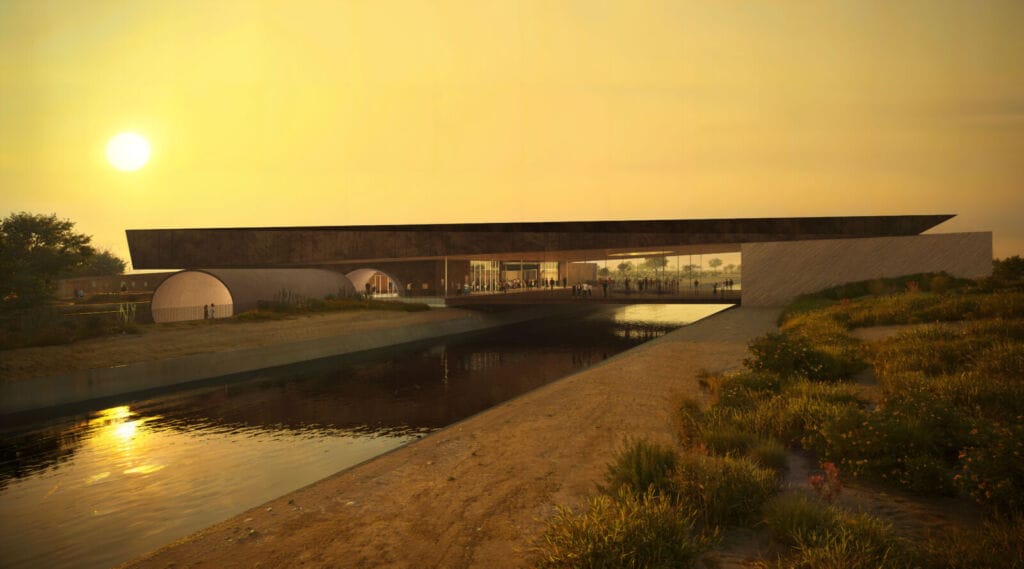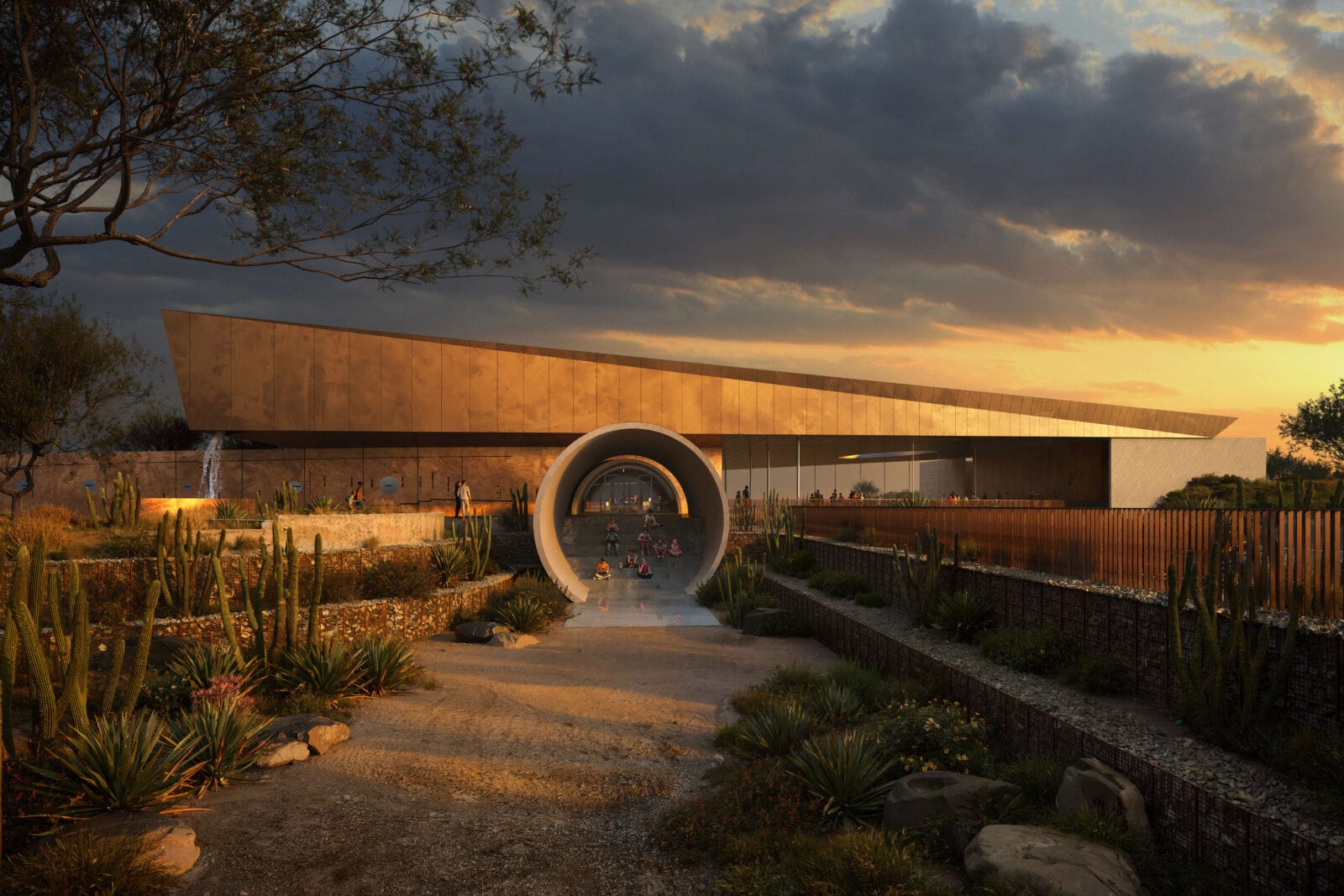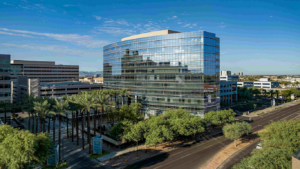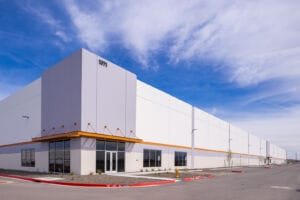On May 1, Central Arizona Project (CAP) and its construction partner Mortenson broke ground on the 32,000-square-foot Water Education Center located near CAP’s headquarters in North Phoenix. Through interactive exhibits and educational programming, the community will have an opportunity to learn how CAP supplies Colorado River water to more than 6 million Arizonans. The facility — expected to be completed in Fall 2026 — will also feature collaborative space for water policy discussions and host Central Arizona Water Conservation District’s (CAWCD) board meetings.
“Ultimately, CAP is federal infrastructure, meaning that it’s difficult to bring in the public to show them our operations because of security,” explains Brenda Burman, general manager at CAP, during the groundbreaking. “[The Water Education Center] will allow us to tell our story with a hands-on experience for kids, adults and everyone in between.”
Even though canals crisscross the Valley, many residents are unaware of what those waterways represent — an engineering marvel. Terry Goddard, CAWCD board president, explains during the groundbreaking that CAP’s 336-mile system is a “miracle” that moves water uphill nearly 3,000 feet in elevation, and was only made possible thanks to a hard-fought political battle.
“Securing the necessary heft in Washington to get [the Colorado River Basin Project Act of 1968] passed over incredible opposition, then building it and now managing it is an amazing accomplishment,” he continues. “With the groundbreaking of the Water Education Center, CAP starts a new chapter during a pivotal moment in Arizona’s water story. It’s a time of anxiety about where our future water supplies will come from … so we need to make sure [Arizonans] know that as the insecurity mounts, they can deal with it and help protect this miracle.”
Purpose built
With a project like the Water Education Center, creating a lasting impression on visitors is a top priority. One way the facility will create a memorable experience is by having it straddle the canal — something Andy Aguero, senior superintendent at Mortenson, says introduces unique construction challenges.
READ MORE: Colorado River water guidelines expire soon. What comes next?
“It’s a tight area, so we have to be precise and make sure we don’t cause any damage to the lining,” he continues. “We’ll use a crane to set the structural steel on the north side of the canal, then work our way to the south side with the bridge components and the grating that goes over it.”
Because of the load limits on the grating across the bridge, Aguero notes that scaffolding will be used instead of scissor lifts to install the structural steel supporting the roof.
The emphasis on education means that the exhibits will be key features of the project. Due to their size, Aguero says that meticulous planning is required so everything comes together as intended.
“A section of walls will be left out so we can set down these large, heavy exhibits with a crane,” he continues. “That will happen before the roof goes on because there’s no other way to get them in the building.”
From a design perspective, Brian Farling, principal at Jones Studio, explains that the bridge was conceived as a connection point to the water below.
“We did that by putting all the heavy-duty structure up in the roof, and then delicately hanging the bridge from it using stainless steel rods,” he continues.
“The walking surface is vertical steel bars on tight centers, so you’ll be able to feel the air and moisture come up through the floor without it seeming precarious.”
An architectural motif present throughout the project are references to the 21-foot-diameter canal siphons that move water throughout the CAP system.
“At the entrance, we have a shaded amphitheater we call the student siphon,” Farling explains. “When groups arrive, it’s a spot where they can listen to stories about what they will see inside.”
That siphon extends into the lobby of the Water Education Center, where guests can learn the basics of CAP operations while standing in just the top half of the pipe — giving context for the scale of the system — before terminating at the executive conference room.
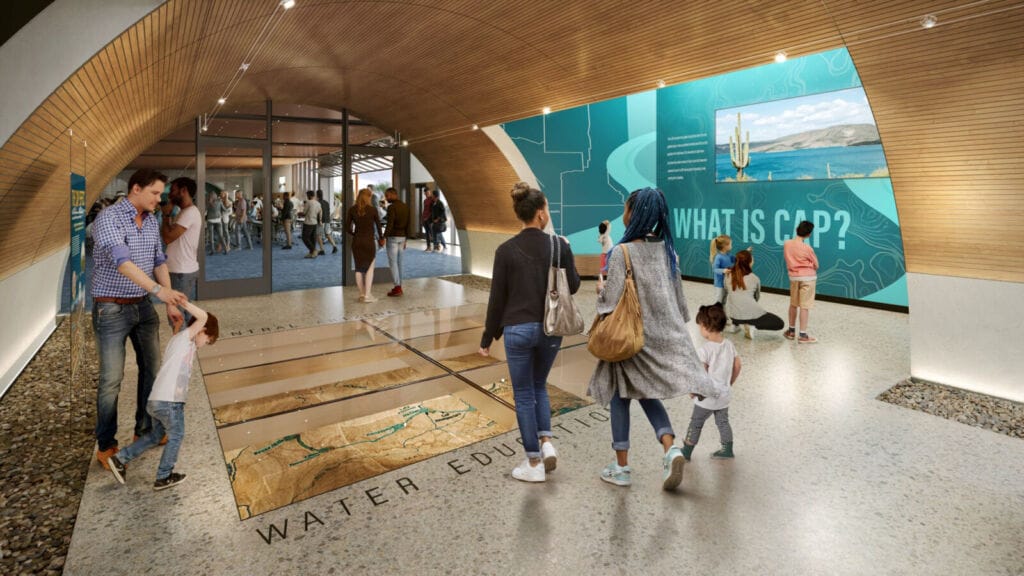
The roof itself has an important role in communicating how to respect scarce natural resources. Rather than treat rainwater as a nuisance, the roof funnels it into a cistern called the tribal ring in honor of the native peoples who first learned to live in Arizona’s desert.
“It seemed like a natural place to celebrate the tribal ancestors and the lessons they taught us about building in this harsh climate,” Farling explains.
After the water is collected, it is released back into nature, giving the tribes a “metaphorical role in nourishing the landscape,” according to Todd Briggs, principal at TRUEFORM Landscape Architecture Studio.
The plant palette, he continues, is reflective of the diversity of ecosystems found in Central and Southern Arizona.
“Whether it’s canyon, riparian, wetland — all the biomes found in the Sonoran Desert will be represented,” Briggs says. “There are layers of real educational moments within the landscape. It’s a well-choreographed progression in terms of what you learn and experience as you arrive.”
